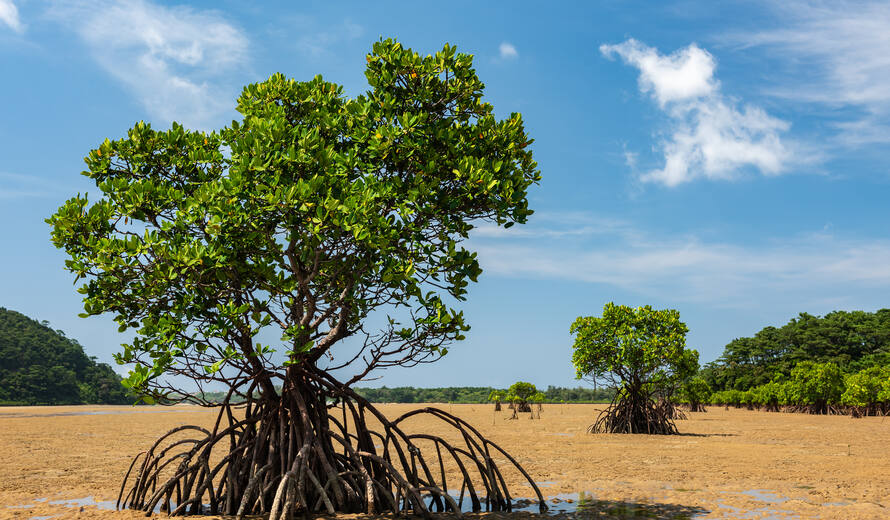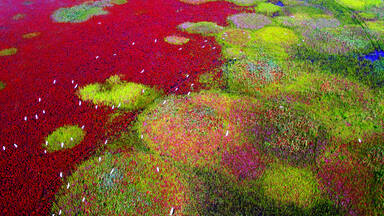Message from Ms Audrey Azoulay, Director-General of UNESCO, on the occasion of the International Day for the Conservation of the Mangrove Ecosystem (26 July 2022)
From the intertwining roots to the tips of the branches, in a complex habitat, many species come to feed and reproduce, forming together one of the most flourishing ecosystems in existence. And we humans depend on these environments that slow down coastal erosion and are a source of food for many.
This is probably why the Colombian poet Tomas Gonzalez made it the symbol of his poetry collection entitled Manglares (Mangroves), which calls for a return to the essential unity of nature: "So that the trees first emerge and then blur and merge with the air, the landscape behind, the mudflats; so that the gannet plunges into the sea in an instant sprinkled with salt, sun, glare; / and so that the sea first gleams and then once again merges with the land".
However, mangroves are in danger: it is estimated that more than three quarters of mangroves in the world are now threatened and with them all the fine balances that depend on them. This is why UNESCO is acting to protect them, along with other valuable blue carbon ecosystems, through its Geoparks, World Heritage sites and Biosphere reserves.
In the face of the climate emergency, however, time is running out and we must go even further, because mangroves are also carbon sinks that we cannot afford to lose. This is why next month UNESCO will launch a new mangrove restoration project in seven Latin American countries: Colombia, Cuba, Ecuador, El Salvador, Mexico, Panama and Peru. This project will not only bring economic opportunities to the local communities, it will also allow the exchange and sharing of knowledge between local and indigenous populations and the scientific community.
Beyond protection and restoration, we need global awareness. This requires educating and alerting the public, not only in schools, but wherever possible. This is the spirit of the exhibition we designed for the National Science Museum of Thailand and which is now being exported around the world, because it is also by showing and explaining the mysteries of mangroves that we will be able to preserve them sustainably.Herein lies the objective of this Day: for everyone in our societies to become aware of the value, the beauty and the vulnerability of mangrove ecosystems and to commit themselves to their protection.


